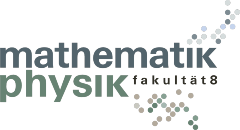4 pm, in lecture hall V57.01
"Counting Curves with Tropical Geometry" – Festive Lecture by Prof. Hannah Markwig, University of Tübingen, including an interview conducted by mathematics students on Prof. Markwig's career and the challenges she has faced.
from 5:30 pm (in the outdoor area – University Center, between Pfaffenwaldring 53 and Universitätsstraße 38)
the traditional summer party of the Faculty of Mathematics and Physics will take place and the students of mathematics and physics will present the lecturer awards.






